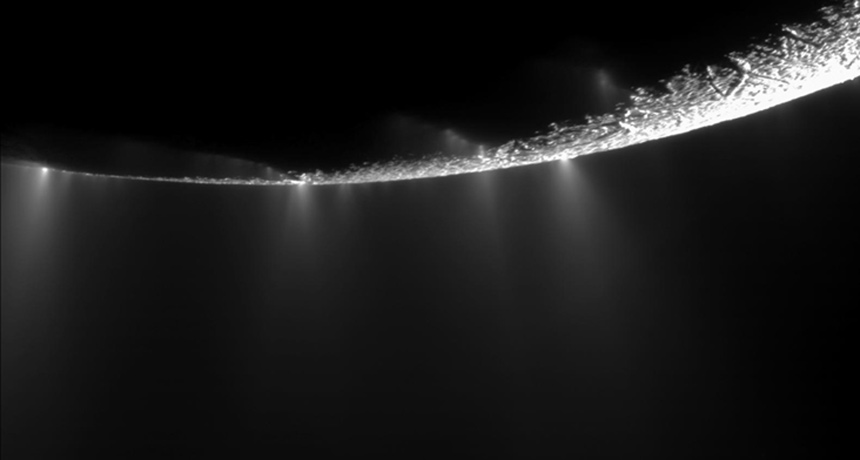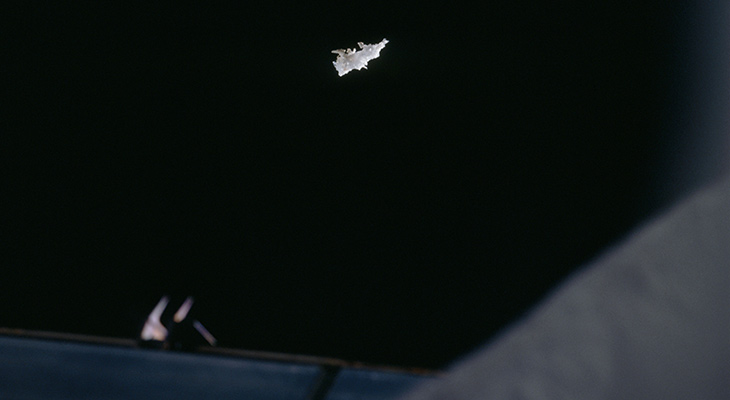Here’s what space toilets can teach us about finding signs of alien life
Waste flushed from space shuttle simulates the plumes of icy moons, one scientist suggests

SPACE SPEW The same process that forces water out of flushed toilets on the space shuttle also applies to the gushing vents on Saturn’s moon Enceladus (shown).
SSI/JPL/NASA, Emily Lakdawalla (mosaic)








